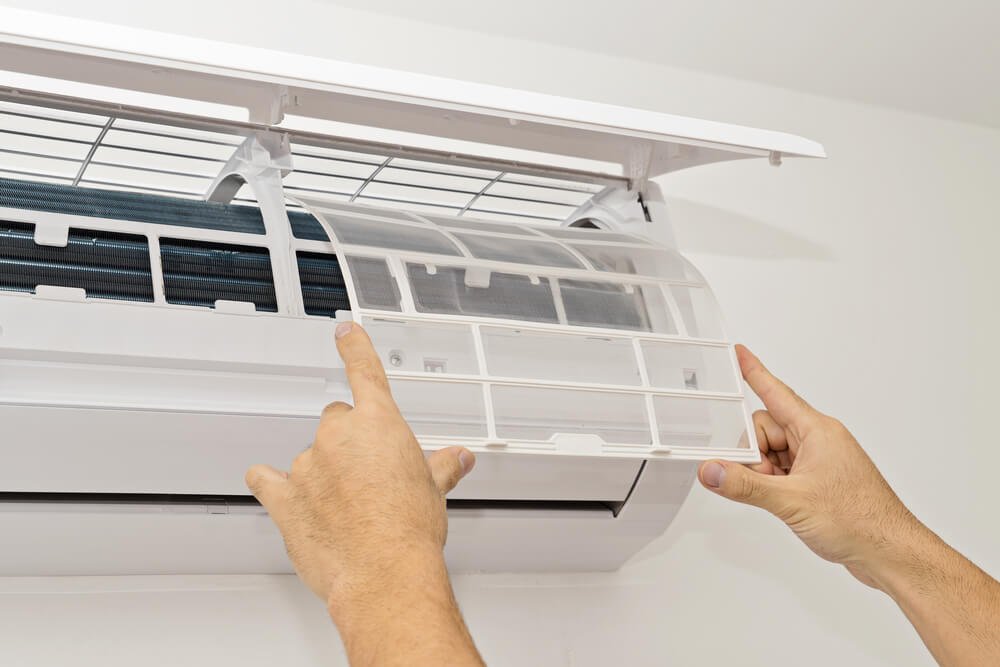air-cons, fans & asthma: the need to know
Did you know dust buildup on air conditioning units and ceiling fans is a major trigger for asthma and hay fever in summer? When turned on, they spread dust, worsening asthma and allergies. This guide offers practical steps to reduce dust and improve your indoor air quality, relieving symptoms at home.
How Dust and Mold in Your Aircon and Fans Could Be Triggering Asthma
When you turn on your air conditioning or ceiling fan after months of winter inactivity, you’re not just cooling your home—you could also be circulating dust, mold, and allergens throughout the air. These hidden particles, built up over time, can become a significant trigger for asthma, hay fever, and other respiratory issues. For anyone in your household who suffers from these conditions, that first blast of cool air might be more harmful than refreshing.
The Silent Culprits: Dust and Mold
Dust and mold are two of the most common irritants found in air conditioning units and ceiling fans, especially if they’ve been left idle for months. Dust particles accumulate on fan blades and inside aircon units, while the damp environment inside the system can encourage mold growth. When these devices are switched on, they can blow these invisible irritants all around your home, right into your lungs.
The result? Symptoms like coughing, sneezing, wheezing, and even full-blown asthma attacks.
Why It Matters for Your Health
If you or someone in your household struggles with asthma, allergies, or respiratory issues, the quality of your indoor air is crucial. Dust and mold can irritate already sensitive airways, making breathing more difficult and increasing the likelihood of an asthma attack or allergic reaction. In fact, many people notice that their symptoms worsen as soon as they start using their aircon or fans in summer.
Mold, in particular, thrives in the damp environment inside aircon units, and once it becomes airborne, it can cause fatigue, headaches, and respiratory infections. Dust, on the other hand, carries allergens that irritate the lungs and nasal passages, making life miserable for those with hay fever or asthma.
What You Can Do to Improve Your Air Quality
While a professional clean is the best way to tackle the buildup of dust and mold, there are things you can do to improve the situation on your own. Keeping fan blades free from dust and regularly cleaning aircon filters are simple ways to reduce the spread of irritants in your home.
Beyond cleaning, regularly replacing air filters in your air conditioning unit will ensure that dust and allergens are being caught before they have a chance to enter your home’s air. Consider investing in a dehumidifier to reduce the moisture in the air, which can help prevent mold growth inside your air conditioning unit.
Why Bother? Your Health Depends On It
Taking care of the air quality in your home isn’t just about comfort; it’s about protecting your health and the health of those around you. If you’ve noticed increased asthma or allergy symptoms when you switch on the aircon or fans, it’s time to take action. By managing dust, mold, and moisture, you can significantly reduce the chances of triggering respiratory issues, and breathe easier in your own home.
-

Where to find your filters
Open the cover of your indoor unit, and gently pull out the filters to clean.
-

Clean your filters
Regularly cleaning your filters and ceiling fan blades aids in removing dust from your home.
-
Clean the vents
Wipe down the vents of your air-con unit with a clean, damp cloth, ensure all parts dry before putting back together.


